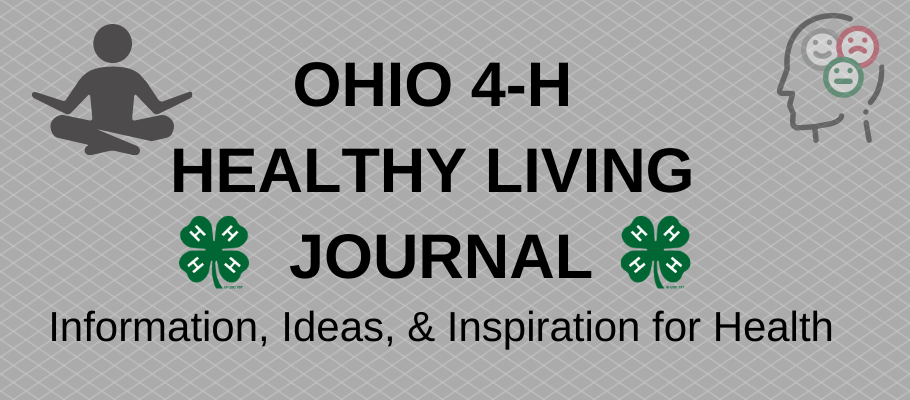Surprise, frustration, excitement, disappointment, calmness, fear: Feelings, or emotions, are a normal part of our everyday lives. Everyone experiences them. We should resist labeling our emotions as “good” or “bad”—it’s how we react and respond to the emotion that’s important.
Identifying your emotions, understanding how they influence your behavior, and being able to manage them are considered a foundation of social emotional learning. When thoughts and emotions work together, it’s easier to make more effective decisions, solve problems, and achieve goals. 
Emotion regulation, also called self-regulation, is a term generally used to describe a person’s ability to effectively manage their thoughts and feelings, with the goal of taking actions that are necessary for success in school, relationships, and the workplace. Whether you realize it or not, you are using emotion regulation strategies many times throughout each day.
For example, self-regulation includes being able to
- resist highly emotional reactions to things others say and do,
- calm yourself down when you get upset,
- adjust when something doesn’t go the way you expect it to and you need to change plans, and
- handle frustration without an outburst. It is a set of skills that that develops over time.
Think about babies – what do they do when they are upset? They cry. This is their way to get attention, to communicate that they are tired, hungry, or frustrated. They haven’t developed many other ways to handle their emotions yet. As they get older, when they are able to talk, they can use words to express how they feel. At first, adults have to help children learn how to do this. Over time, they learn more strategies and to take charge of using them.
Now fast forward in time: How do you react to situations at home, school, and/or work that you find frustrating or overwhelming? Do you ever find yourself in a situation where your emotions get the better of you and you say or do something that doesn’t get the desired result?
When thoughts and emotions work together, it supports you in making more effective decisions, solving problems, and achieving goals. However, in teenagers, the parts of the brain that process emotions are more developed than the parts of the brain responsible for good decision-making and future planning. This means that for a while the two parts of the brain are “out of balance.” Those first reactions may come from the “emotional brain” before the “thinking brain” kicks in and regulates your response. Has someone ever said to you, “What were you thinking?” when they don’t understand your reaction to a situation? If you can’t explain what you were thinking, it may be that you weren’t thinking as much as you were feeling and reacting to those feelings.
While you’re waiting for your brain to sync up, it doesn’t mean that you have to give up – you can learn to manage your emotions more effectively. The first step is tuning in to your feelings. Notice your body’s reactions and take a pause before you respond to a situation. You may notice that your heart pounds, your face may turn red, you clench your teeth, your hands might sweat, your breathing may become faster or slower, or your facial expression could change.
Emotion regulation strategies can help you manage your body’s response and how you follow through on your feelings. Here are some strategies you can you to deal with your feelings in a healthy way.
Examples of Healthy Emotion Regulation Strategies
- Talking with friends
- Exercising
- Writing in a journal
- Meditation
- Getting adequate sleep
- Paying attention to negative thoughts that occur before or after strong emotions
- Noticing when you need a break – and taking it
- Seeking professional help
If you’ve been reading these posts, you may be noticing some common threads in these strategies. Mindfulness and self-care strategies figure prominently in these suggestions.
The strategies we choose to deal with our feelings are not always healthy ones. They may make you feel better in the short term, but they may work against you in the long run. They can have a negative impact on your physical and mental health. Their effect on your relationships with others, a component of your social health, may be undesirable as well.
Examples of Unhealthy Emotion Regulation Strategies
- Avoiding or withdrawing from difficult situations
- Physical or verbal aggression
- Overusing social media, to the neglect of other responsibilities
- Abusing alcohol or other substances
- Self-injury
Today’s Take-Away: Emotions are a normal part of our everyday lives. Emotion regulation is not aimed at eliminating emotions from our lives, but rather understanding them and controlling their influence when this influence is undesired. You can download the  Dealing with Feelings activity sheet to help you think through a situation, how you respond, and what you could do instead.
Dealing with Feelings activity sheet to help you think through a situation, how you respond, and what you could do instead.
See the Ohio 4-H Mental Health Month resources and come back here for more information and ideas.
Yours in Health,
Theresa Ferrari, Extension Specialist, 4-H Youth Development
Adapted from:
Murray, D. W., & Rosanbalm, K. (2017). Promoting Self-Regulation in Adolescents and Young Adults: A Practice Brief. (OPRE Report #2015-82). Office of Planning, Research, and Evaluation, Administration for Children and Families, U.S. Department of Health and Human Services.
Rolston, A., & Lloyd-Richardson, E., (n.d.). What is emotion regulation and how do we do it? Cornell Research Program on Self-Injury and Recovery. http://www.selfinjury.bctr.cornell.edu/perch/resources/what-is-emotion-regulationsinfo-brief.pdf

